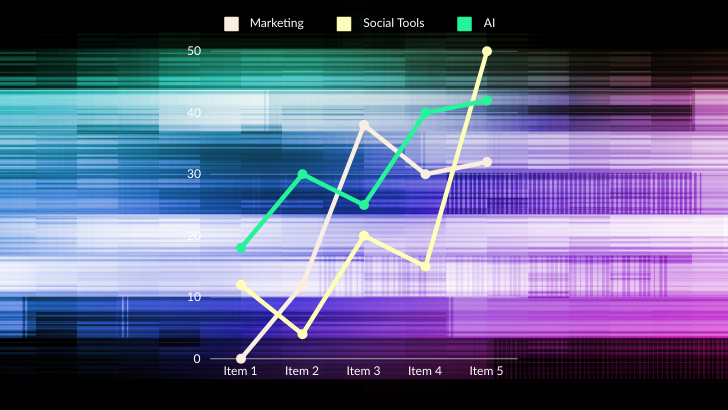As life sciences companies settled into new operating models and remote ways of working over the last year, many came to realize that a return to pre-pandemic days was no longer necessary. The industry delivered innovation after innovation—resulting in more than 3 billion people fully vaccinated against COVID-19 globally, with promising new antiviral pills on the horizon—all while continuing to operate in hybrid work environments.
In 2022, these accomplishments will pave the way for long-term changes across R&D and commercial operations. Fueled by new insights gleaned from more robust data, companies will achieve new levels of efficiency that will ultimately result in stronger customer relationships and more patient-centered care. Here’s how Veeva’s industry experts envision that playing out next year.

Paul Shawah, Executive Vice President, Commercial Strategy
1. Simplification will clear the path toward omnichannel successOver the last couple of years, commercial organizations have been hard at work trying to deliver on the promise of omnichannel. They’ve invested in myriad tools for connecting data sources, customer journeys, and analytics engines—only to find themselves bogged down by a complicated patchwork of systems.
These costly and unwieldy architectures will eventually get the attention of the C-suite, driving many organizations to pause and hit the reset button next year. Simplification and consolidation will be a key priority for 2022 and beyond. Because the fewer systems involved in orchestrating omnichannel, the greater agility and efficiency sales and marketing will see.
And the stakes are high for getting it right. While many parts of the omnichannel puzzle have been solved, namely, engagement channels and content, orchestration at scale is how companies can truly differentiate. Together, these efforts will help the industry finally make omnichannel excellence a reality.
 Asaf Evenhaim, CEO, Crossix
Asaf Evenhaim, CEO, Crossix
2. Commercial operations will go all-in on patient dataPatient data isn’t new, but its perceived importance has lagged that of prescription data. In 2022, commercial teams will realize that the specifics they need to optimally target a therapy or device can only be found in patient history and behavior. This data transcends the current tangle of distribution channels and will be critical to identifying disease states, targets, and the decisive moments for commercial intervention and impact.
With a sharper focus on patient data, companies will be able to assemble a much better picture of their market. There is more de-identified patient data available than ever before, and this information is going to become what retail pharmacy data was in the 1990s and early 2000s. To leverage this as a foundation for the commercial model, however, patient data has to become more complete, seeing into segmentation or targeting gaps previously identified at most companies.
There will also be an opportunity to do more analytics on patient data next year, but artificial intelligence (AI) alone is not the answer, even though we are likely to see more industry-specific AI applications. Data sets have always needed systematic analysis to be of use, but the industry is realizing that the math isn’t hard. What’s hard is translating the math into business strategy and execution. You have to be able to act on the data.
 Jim Reilly, Vice President, Vault R&D and Quality
Jim Reilly, Vice President, Vault R&D and Quality
3. Patient and site centricity will drive the next phase of clinical trialsDuring the pandemic, the industry accelerated adoption of decentralized trial capabilities to bring more trial elements directly to the patient. However, predictions that pharma would adopt a fully virtual model in which sites become less relevant have already been proven wrong.
Instead, the industry is moving to a hybrid model of trial execution with some decentralized elements. Sites (and the investigator) will continue to play a vital role as touchpoints for patient engagement and retention. As more clinical data is captured electronically, we’ll see faster trials that are better managed and speed delivery of new therapies.
In addition to more effective data management, greater patient and site centricity will drive further change in studies. Some of the decentralized clinical trials that ran in 2020 and 2021 weighed patients down with numerous digital applications, while research sites felt burdened with a multitude of point solutions that made it more difficult to manage trials. Now, as they work to reduce the technology burden on patients, more sponsors will minimize the digital applications and portals that they require sites to use. This will enable sites to spend less time on administrative functions, and more on patient safety and care.
 Dan Rizzo, Vice President, Global Business Consulting Leader
Dan Rizzo, Vice President, Global Business Consulting Leader
4. A performance gap will emerge between the digital haves and have notsAs the pandemic wanes, some companies will see office openings as an invitation to return to the old, face-to-face way of engagement. But in 2022, we’ll start to see a clear distinction between the performance of these commercial organizations versus those that continue to invest in digital. By being attuned to healthcare professional (HCP) needs and creating tailored experiences, digital-savvy teams will earn the loyalty of physicians by meeting them where they are, helping them outperform the competition.
Nearly nine out of 10 prescribers in the U.S. expect pharma to engage through a mix of hybrid and virtual channels, and the impact of that is clear in our recent Veeva Pulse data: Promotional response to virtual calls is 3x greater than face-to-face calls.
To reap all the bottom-line benefits of digital selling, however, companies will need to revamp their rep training and better leverage data. Having a clear vision and strategy that articulates why it is critical to continue investing in hybrid selling will also be key to driving long-term change and impact.
 Seth J. Goldenberg Ph.D., Vice President, Vault MedTech
Seth J. Goldenberg Ph.D., Vice President, Vault MedTech
5. Digital therapeutics will have the payer backing to go mainstreamWhen Pear Therapeutics secured reimbursement for rSET—a prescription digital application used to treat substance use disorder—from Massachusetts’ Medicaid program this year, it set a major milestone for the industry, becoming the first company to receive payer funding for a digital therapeutic. Now, with the pathway toward reimbursement open, we expect to see digital therapeutics enter a new phase of growth in 2022.
For a market with a projected global value of $56 billion by 2025, this presents a massive opportunity for medtech and pharma companies to broaden their portfolios. As more companies run digital therapeutics trials to gather clinical evidence for reimbursement, however, larger and more diverse data sets will need to be tracked and analyzed. After the products are prescribed, real-world evidence will also need to be collected and reviewed in an equally efficient manner.
All this data will ultimately provide more insight into patient behavior, but it will also create more complexity and privacy issues to stay on top of. In line with our prediction from 2020, modern approaches to data management will be key to the commercialization and regulatory compliance of these products.
 Arno Sosna, General Manager, CRM Products
Arno Sosna, General Manager, CRM Products
6. Data supply chains will go through a major consolidation—and accelerate as a resultThe rise in complex therapies over the last decade has created a data gap in the commercial sphere, one brought on by the industry’s overreliance on legacy, pharmacy-dispensed prescription data. As a result, many have found themselves buried under hundreds of disconnected data sources, unable to gain the insights they need to better identify patients and key HCPs.
In 2021, we started to see companies work in earnest to clean up their data supply chains, and we expect to see the impact of these efforts by the end of next year. With a greater focus on longitudinal, patient-level data that brings together information on health plans, PBMs, payers, pharmacies, and more from one source, companies will be able to better support commercial operations, strategic planning, and go-to-market execution.
When this clean, consolidated data is then integrated into software applications that commercial teams rely on, companies can expect to see even greater improvements in speed and efficiency. Corrections will happen faster, market intelligence will be sharper, and patients with rare diseases will be all the better for it.
 John Lawrie, Vice President, Vault RIM and Vault Safety
John Lawrie, Vice President, Vault RIM and Vault Safety
7. Pharmacovigilance transformation will catch up with the rest of R&DR&D may have been one of the last areas to modernize and transform its operations, but use of new business approaches and technology have had a major impact on operations within clinical and regulatory. Pharmacovigilance is now catching up, as more companies re-examine the way they handle case intake and processing, in parallel with their document management needs. Safety departments are also taking a more proactive approach earlier in drug development and investigating more advanced technologies for signal detection, analysis, and management.
In 2022, automating manual processes and finding new ways to process information will be crucial to improving patient safety and maintaining compliance. So will simplifying data management systems, their validation, and ongoing maintenance. Within the past year, more than 50 life sciences companies, from small innovators to large enterprises, have modernized pharmacovigilance data management to streamline safety operations.
As the technology modernization trend continues next year, safety departments will focus on the opportunity to manage their end-to-end pharmacovigilance processes and information more holistically, in a more efficient and compliant manner.
 Pooja Ojala, Vice President, Commercial Content
Pooja Ojala, Vice President, Commercial Content
8. Hyperlocal, globally governed operating models will disrupt content strategyIn 2020, life sciences marketers rapidly shifted to digital engagement, investing in everything needed to produce and manage digital content, including internal studios to maintain faster ways of working. These new capabilities took their place alongside other big investments across technology, data, and operating model redesigns to drive focus, standardization, and scale across brands and channels.
As we approach 2022, marketers are now asking themselves whether they have what they need to create personalized content at speed to deliver more relevant HCP experiences. In rethinking their current approaches, many will turn to more self-sufficient models that enable local markets while drawing on the strengths of global operations.
By revisiting their content strategy and foundational elements like digital asset management (DAM), claims libraries, governance, and more, companies will be in a much better position to scale the modular content and omnichannel distribution now required for effective engagement. DAM, in particular, will be a crucial lever for simplifying, streamlining, and speeding time to market—especially when integrated with medical, legal, and regulatory (MLR) review.
 Rik Van Mol, SVP, Development Cloud
Rik Van Mol, SVP, Development Cloud
9. Drug development will increasingly rely on a single, consistent source of dataAs R&D teams work to reduce point solutions, many are realizing the importance of data quality. On the clinical side, for example, patient data must be aggregated and cleaned if data from new sources, such as wearables, is to connect to clinical and clinical operations data. Companies that cannot do this will find it difficult to learn from past events to improve operations.
That’s why, in 2022, we expect to see more companies adopt data management tools that will automate and speed up this work by ingesting, aggregating, and cleaning data so that it’s easier to analyze, report on, and share.
GSK and Novartis are among the companies focusing on data quality and moving toward real-time interactive dashboards, using a platform approach that simplifies data exchange. Instead of merely storing data in a data lake and then analyzing it, this approach deals with the disparity of data and their sources, whether input manually or sent from sensors. The result will be a single source of data that will improve cross-functional collaboration by allowing information to flow easily to different functions within drug development.
 Chris Moore, President, Veeva Europe
Chris Moore, President, Veeva Europe
10. Quality will trump quantity of HCP interactionsDigital engagement was critical to commercial success during the height of the pandemic. But as companies look ahead to 2022, many are now trying to solve the more complex question of how to balance in-person and digital engagement based on therapeutic area, market, and individual HCP.
In a post-pandemic world, relevance of interactions will replace the volume of HCP touchpoints as the key measure of successful engagement. This is due to increasingly time-pressured physicians wanting to engage with companies that will make the best use of their time. While there will still be a need for face-to-face interactions and intelligence gathering, high-quality content delivered by experts will prove to be the most effective form of engagement, especially when done through the convenience of virtual meetings.
As companies continue to navigate a world with multiple channels, field forces, and divisions, the ability to drive more relevant conversations will pave the way toward a more sustainable and cost-effective model across commercial and medical.
___
This post was originally published on the Veeva Systems blog.



